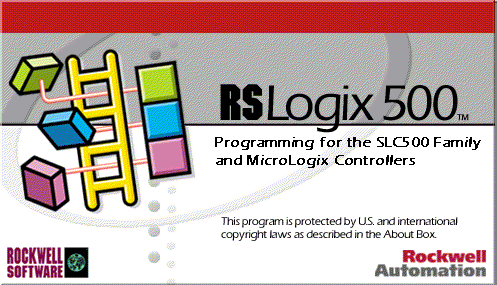1. EXECUTIVE SUMMARY
- CVSS v3 9.8
- ATTENTION: Exploitable remotely/low skill level to exploit
- Vendor: Rockwell Automation
- Equipment: MicroLogix 1400 Controllers, MicroLogix 1100 Controllers, and RSLogix 500 Software
- Vulnerabilities: Use of Hard-coded Cryptographic Key, Use of a Broken or Risky Algorithm for Password Protection, Use of Client-Side Authentication, Cleartext Storage of Sensitive Information
2. RISK EVALUATION
Successful exploitation of these vulnerabilities could allow an attacker to gain access to sensitive project file information including passwords.
3. TECHNICAL DETAILS
3.1 AFFECTED PRODUCTS
The following versions of Rockwell Automation products are affected:
- MicroLogix 1400 Controllers
- Series B v21.001 and prior
- Series A, all versions
- MicroLogix 1100 Controller, all versions
- RSLogix 500 Software v12.001 and prior
3.2 VULNERABILITY OVERVIEW
3.2.1 USE OF HARD-CODED CRYPTOGRAPHIC KEY CWE-321
The cryptographic key utilized to help protect the account password is hard coded into the RSLogix 500 binary file. An attacker could identify cryptographic keys and use it for further cryptographic attacks that could ultimately lead to a remote attacker gaining unauthorized access to the controller.
CVE-2020-6990 has been assigned to this vulnerability. A CVSS v3 base score of 9.8 has been assigned; the CVSS vector string is (AV:N/AC:L/PR:N/UI:N/S:U/C:H/I:H/A:H).
3.2.2 USE OF A BROKEN OR RISKY ALGORITHM FOR PASSWORD PROTECTION USE OF CLIENT-SIDE AUTHENTICATION CWE-327
The cryptographic function utilized to protect the password in MicroLogix is discoverable.
CVE-2020-6984 has been assigned to this vulnerability. A CVSS v3 base score of 9.8 has been assigned; the CVSS vector string is (AV:N/AC:L/PR:N/UI:N/S:U/C:H/I:H/A:H).
3.2.3 USE OF CLIENT-SIDE AUTHENTICATION CWE-603
A remote, unauthenticated attacker can send a request from the RSLogix 500 software to the victim’s MicroLogix controller. The controller will then respond to the client with used password values to authenticate the user on the client-side. This method of authentication may allow an attacker to bypass authentication altogether, disclose sensitive information, or leak credentials.
CVE-2020-6988 has been assigned to this vulnerability. A CVSS v3 base score of 7.5 has been assigned; the CVSS vector string is (AV:N/AC:L/PR:N/UI:N/S:U/C:H/I:N/A:N).
3.2.4 CLEARTEXT STORAGE OF SENSITIVE INFORMATION CWE-312
If Simple Mail Transfer Protocol (SMTP) account data is saved in RSLogix 500, a local attacker with access to a victim’s project may be able to gather SMTP server authentication data as it is written to the project file in cleartext.
CVE-2020-6980 has been assigned to this vulnerability. A CVSS v3 base score of 4.0 has been assigned; the CVSS vector string is (AV:L/AC:L/PR:N/UI:N/S:U/C:L/I:N/A:N).
3.3 BACKGROUND
- CRITICAL INFRASTRUCTURE SECTORS: Multiple
- COUNTRIES/AREAS DEPLOYED: Worldwide
- COMPANY HEADQUARTERS LOCATION: United States
3.4 RESEARCHER
Ilya Karpov, Evgeny Druzhinin from independent research team ScadaX Security and Dmitry Sklyarov from Positive Technologies, as well as Rongkuan Ma, Xin Che, and Peng Cheng from 307 Lab, reported these vulnerabilities to Rockwell Automation.
4. MITIGATIONS
For MicroLogix 1400 series B controllers, Rockwell recommends affected users apply FRN 21.002 or later for MicroLogix 1400 Series B devices and use the enhanced password security feature.
Rockwell Automation reports that there are currently no mitigations for MicroLogix 1400 series A controllers or MicroLogix 1100 controllers.
For RSLogix 500 software, Rockwell Automation recommends affected users apply v11 or later and use in conjunction with applied FRN 21.001 or later for Micrologix 1400 Series B devices. Other configurations do not have direct mitigations.
CISA recommends users take defensive measures to minimize the risk of exploitation of this vulnerability. Specifically, users should:
- Minimize network exposure for all control system devices and/or systems, and ensure that they are not accessible from the Internet.
- Locate control system networks and remote devices behind firewalls, and isolate them from the business network.
- When remote access is required, use secure methods, such as Virtual Private Networks (VPNs), recognizing that VPNs may have vulnerabilities and should be updated to the most current version available. Also recognize that VPN is only as secure as the connected devices.
CISA reminds organizations to perform proper impact analysis and risk assessment prior to deploying defensive measures.
CISA also provides a section for control systems security recommended practices on the ICS webpage on us-cert.gov. Several recommended practices are available for reading and download, including Improving Industrial Control Systems Cybersecurity with Defense-in-Depth Strategies.
Additional mitigation guidance and recommended practices are publicly available on the ICS webpage on us-cert.gov in the Technical Information Paper, ICS-TIP-12-146-01B–Targeted Cyber Intrusion Detection and Mitigation Strategies.
Organizations observing any suspected malicious activity should follow their established internal procedures and report their findings to CISA for tracking and correlation against other incidents.
No known public exploits specifically target these vulnerabilities.
Source:


Stay connected